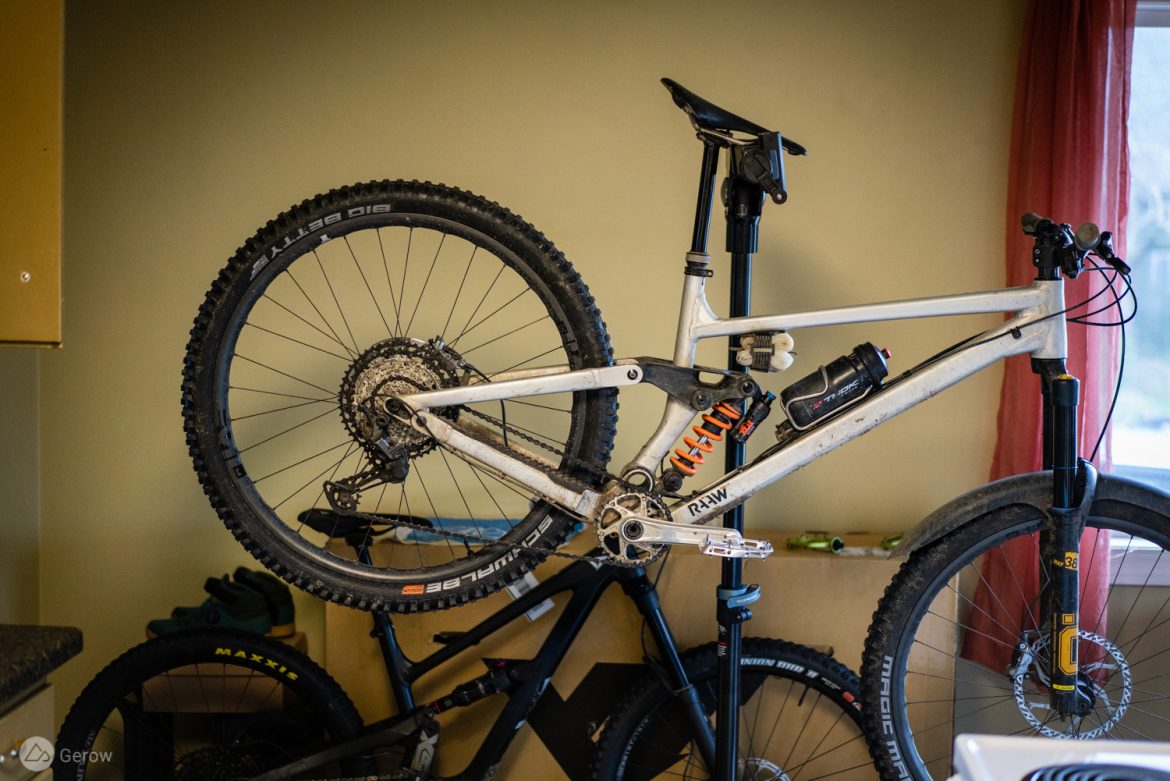
Living in an apartment has some clear perks: you don’t have to replace the roof when it rots, and yard care is someone else’s weekend chore while you’re out riding. The tradeoff is that there’s rarely a garage for wrenching bikes, so a lot of home mechanics learn to take over half of the kitchen.
If you have a spacious garage with all of the room for bikes and tools you can likely skip this article, though it is still important to organize all your instruments and spares so you can quickly find them. One easy way to organize tools and parts is with inexpensive canning jars or recycled jars from jam and what-have-you. The important part is that you can see through to all the goods, which is why I like to soak the labels off so I can view what lies inside.
Hyper-organized tool kits like the one we reviewed from Pro can take care of all of your organizational needs, though they often come with a pile of things you don’t need while charging a premium for tools like Allen keys and crescent wrenches that you could purchase for less at a local hardware store.

While the above drawer may look disheveled, it contains a specific category of tools. I prefer to organize everything by how often I use it, with this drawer being filled by daily drivers and some other drawers that house things like crown-race and star-fangled nut setters in the sliders beneath.
Anything liquid-based is on the top left side of the kitchen cupboard, and tools I use with every single repair are in the clear jars to be taken down when bike is in the stand. I also keep a small toolbox packed with spare parts and another set of tools, ready to be thrown in any car that’s headed to the trail or race. There are a few handy extras in there, like a lighter for cleaning brake pads and lighting campfires, a beer opener, a shock pump, and a fairly extensive first aid kit. I’d like to leave that red box in my car but I don’t need to give anyone desperate for cash a reason to break the windows.

Someone recently asked, “should I build a workbench or just have a bike stand?” I replied, “both if you have space available.” Everyone needs a repair stand of some sort, even if it’s a super simple one like the $70 moto-style stands from Feedback Sports (available at Competitive Cyclist and Performance Bike). Flipping your bike upside down won’t work for all repairs, and a stand can give you something sturdy to push against when you need to put a lot of torque on a component. A workbench is sweet for organizing everything and staging components, but it’s not an entirely necessary component for a good workshop. A magnetic bowl will fill most of the uses of a workbench, apart from steadying a vice or grinder. I’ve been fortunate to have kind neighbors with bench vices and grinders when I needed them, and barring that you could always go to the bike shop for those rare repair needs.
While proper bike stands are great to hold the steed steady you can also mount a 4×4 arm to any wall, wrap it in some carpet or old tires, and hang your bike from it by the saddle similarly to how the bike below is hanging from the bike stand arm. This isn’t the most sturdy repair position, but it works for a lot of needs. If you mount that 4×4 board outdoors it can be a great place to hang your ride while washing off the crud while the wheels spin freely for a deeper clean.

Another organizational use for a 4×4 board is to lay it across the back of your workbench and drill 3″ deep holes in it to slot all of your Allen, Torx, and screwdriver tools into. That way they are easily accessible and always within view. We will have a brief video tutorial demonstrating the 4×4 holster in the near future. Alternatively, you could consolidate all of those bits into a simple handheld bit driver or torque wrench, though you may still need some L-shaped Allen keys to fit in tighter spaces. I use this bit driver from Kobalt for most things that don’t require high torque, and button up the bolts with a torque wrench before calling the job complete.
There are no toolbox wars here. The right half of my kitchen is dedicated to bike repair and the left half is where I make meals. What’s your home mechanic organization look like? Every time I step into someone’s shop I see something innovative and clever. Please share those bits with everyone in the comments section.









2 Comments
Feb 18, 2022
Assuming this cyclist is already single (hint: workshop in the kitchen!) this cyclist may have to mount a raid on his mum's / aunty's/ sister's tupperware cupboard as chicks collect tupperware like we collect bike tools. Speaking for myself that is. NZRalphy's idea of using a sharpie for labels is good too, however would probably get me in trouble for defacing 'borrowed' tupperware whilst ensuring its not wanted back. 🤪
Feb 17, 2022
I scavenge bits and fastenings off items before they go into the rubbish. Put them in a labeled container. They can be useful for the next repair or mates call me up asking “Hey have you got that small part used to…”